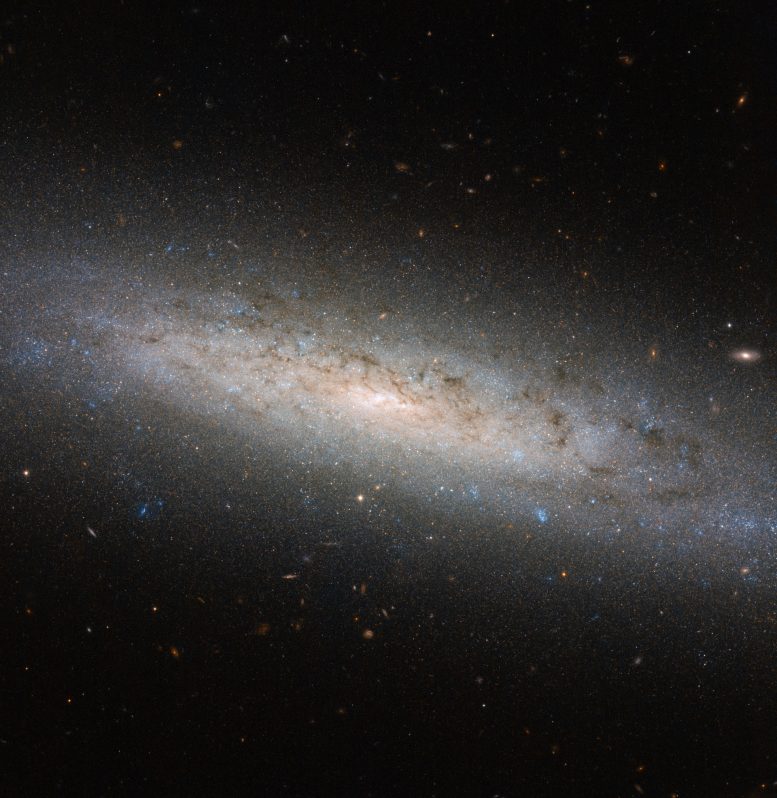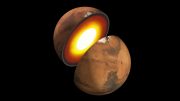
Spiral galaxy NGC 24 is located 25 million light-years away from Earth in the constellation of Sculptor. Credit: ESA/Hubble & NASA
This newly released Hubble image shows spiral galaxy NGC 24, which is located 25 million light-years away from Earth in the constellation of Sculptor. NGC 24 was discovered by British astronomer William Herschel in 1785, and measures some 40,000 light-years across.
This picture was taken using the NASA/ESA Hubble Space Telescope’s Advanced Camera for Surveys, known as ACS for short. It shows NGC 24 in detail, highlighting the blue bursts (young stars), dark lanes (cosmic dust), and red bubbles (hydrogen gas) of material peppered throughout the galaxy’s spiral arms. Numerous distant galaxies can also be seen hovering around NGC 24’s perimeter.
However, there may be more to this picture than first meets the eye. Astronomers suspect that spiral galaxies like NGC 24 and the Milky Way are surrounded by, and contained within, extended haloes of dark matter. Dark matter is a mysterious substance that cannot be seen; instead, it reveals itself via its gravitational interactions with the surrounding material. Its existence was originally proposed to explain why the outer parts of galaxies, including our own, rotate unexpectedly fast, but it is thought to also play an essential role in a galaxy’s formation and evolution. Most of NGC 24’s mass — a whopping 80% — is thought to be held within such a dark halo.









There are some very complicated issues of galaxy formation. Unfortunately, here is the same problem as with the stars. The origin of galaxies remains unclear, in spite of huge activity in the field. What the “formation” means? It means that we have the material that is assembling into galaxies.